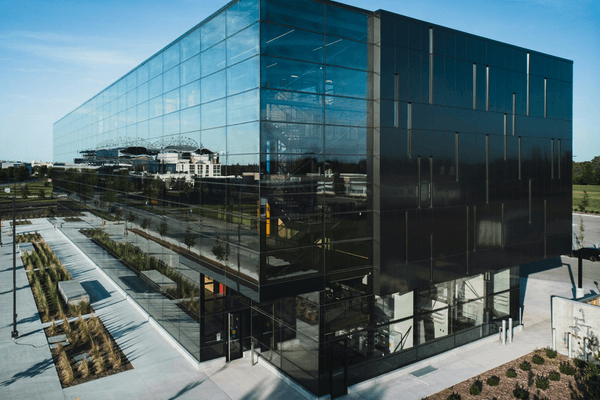
Share
Charter Hall calls market inflection point as construction costs soar 45% above purchase prices. Interest rate cuts and demographic growth create rare opportunity.
Picture this you’re sitting across from Australia’s most successful property investor, who manages over $83 billion in real estate assets. They lean forward and tell you, “The market has reached an inflection point. For long-term investors seeking stable income, the answer is now.” Would you listen?
That’s exactly what happened when Charter Hall’s CEO Steve Bennett made this bold declaration about Australia’s commercial property market. After weathering a brutal two-and-a-half-year storm that slashed valuations by up to 25% across some sectors, the nation’s largest real estate owner is calling the bottom.
But here’s what makes this moment extraordinary: while property values have fallen, the cost to build new commercial buildings has skyrocketed 25-45% higher than current purchase prices. Add in the Reserve Bank cutting interest rates, and you have what industry veterans are comparing to the golden investment opportunities of the 1990s and post-GFC recovery periods.
The stars are aligning for commercial property investors in a way that hasn’t been seen for over a decade. The question isn’t whether to act – it’s how quickly you can position yourself before the opportunity disappears.
Why timing has never been more crucial for commercial property investors
Think of the commercial property market as a coiled spring that’s been compressed for over two years. Now, that spring is ready to release.
The market sits in what analysts call the “post-devaluation phase” – a fancy way of saying the worst news has already hammered asset prices down. Knight Frank confirms that the commercial property market is now in a good position for investors as the fundamentals for long-term growth remain strong, with the bad news largely having already been priced in.
Here’s why this positioning is so powerful: instead of buying at peak prices and hoping for the best, today’s investors are acquiring battle-tested assets after significant corrections but before recovery momentum accelerates. It’s like buying quality shares during a market crash – scary at the time, but potentially lucrative for patient investors.
The numbers tell a compelling story. Analysis by Hines Research reveals that 66% of global markets were in some phase of the “buy” cycle as of Q3 2024 – the highest level since 2016. This mirrors conditions during the most successful investment periods of recent decades.
But here’s the kicker that makes this opportunity truly special: construction economics have turned upside down. Charter Hall’s research shows it costs 25-45% more to build an equivalent office building than to simply buy an existing one. For industrial properties, the premium is around 20%.
Meanwhile, the Reserve Bank has started cutting rates – dropping from 4.35% to 4.10% in February, with economists predicting further cuts to 3.35% by December 2025. Lower rates mean cheaper financing and higher asset values. It’s a double win for commercial property investors.
Where the smart money is moving: sector opportunities revealed
Not all commercial property sectors are created equal right now. While the overall market is recovering, knowing where to focus your investment dollars can make the difference between good returns and exceptional ones.
Retail’s remarkable renaissance
Retail properties have shocked everyone by becoming the star performers, delivering robust 5.73% total returns. After years of doom and gloom about online shopping killing physical stores, retail has adapted and thrived. Limited new shopping centre development, combined with Australia’s population boom, has created a perfect storm of rising demand and constrained supply.
The retail renaissance reflects something deeper: consumers still want physical experiences. They just want better ones. Quality retail properties in prime locations are commanding premium rents from tenants who understand the value of foot traffic.
Industrial properties: the e-commerce boom continues
If retail is the surprise winner, industrial and logistics properties are the steady performers everyone expected to dominate. In Sydney and Brisbane, demand for prime industrial assets is so intense it’s driving competition to fever pitch and pushing yields down.
Why? The e-commerce revolution isn’t slowing down – it’s accelerating. Every package delivered to your door needs warehouse space, sorting facilities, and distribution networks. With Australia’s industrial vacancy rate sitting at just 2.5% (one of the lowest globally), finding quality space is like finding a parking spot at Bondi Beach on New Year’s Day.
Office properties: the patient investor’s opportunity
Office properties tell a more complex story. While some markets like Melbourne have struggled, the sector is expected to see 25% growth in investment volumes during 2025.
Here’s what’s driving this turnaround: return-to-office policies are gaining momentum, premium workspace commands premium rents, and the development pipeline has essentially frozen. When it takes 4-7 years to build a new CBD office tower, existing quality buildings become increasingly valuable.
CBRE forecasts overall commercial property investment volumes will jump 15% to $36 billion in 2025, with momentum continuing into 2026. The recovery train is leaving the station.
Why construction costs are creating a massive advantage for property buyers
Imagine trying to build a house when materials cost twice what they did five years ago, and tradies are charging $85 an hour. That’s the reality facing commercial developers right now – and it’s creating unprecedented opportunities for investors buying existing properties.
Here’s the shocking reality: commercial construction costs now range between $1,800 to $4,000 per square metre, and they’re still climbing. Residential construction costs jumped 3.4% in 2024 alone, with experts predicting this will accelerate towards 4.0% annually.
The labour cost crisis
Construction sites have become some of the most expensive workplaces in Australia. General labourers earn $75 an hour including overheads, while skilled tradesmen command $85 an hour. Add in 36-hour working weeks, 26 rostered days off beyond normal leave, and full pay when weather turns bad, and you understand why building costs have exploded.
The mining boom created this labour shortage by pulling workers into higher-paying resource projects. Now the construction industry is stuck paying premium wages just to keep projects moving.
Material price volatility adds another sting
While steel and copper prices have eased recently, energy-intensive materials like concrete and bricks remain expensive. Prices can fluctuate 1-10% across different regions depending on local supply chains and demand pressures.
Development timelines create scarcity value
Here’s where it gets really interesting for investors. Steve Bennett from Charter Hall explains: “Construction risk is high because developers need to get through development application planning, financing and leasing, and find skilled labour. The big players are finding that often it doesn’t make economic sense.”
This development slowdown is particularly pronounced for CBD office projects, which take 4-7 years from concept to completion. Even if construction costs dropped tomorrow, new supply wouldn’t hit the market until the late 2020s. This extended timeline creates immediate scarcity value for existing quality properties.
The demographic time bomb that guarantees long-term demand
While market cycles come and go, demographic trends provide the foundation for sustainable long-term returns. Australia’s population story reads like an investor’s dream.
3.9 million new Australians need somewhere to work and shop
Charter Hall’s group chief executive David Harrison puts the challenge in perspective: “Looking 10 years ahead, Australia is forecast to see its population grow by 3.9 million people. To accommodate this growth, Australia will need to build additional supply across all real estate sectors, the size of Brisbane and Adelaide combined.”
Let that sink in. We need to effectively build two major cities’ worth of commercial infrastructure just to keep pace with population growth. When construction costs are soaring and development timelines stretch to nearly a decade, existing properties become increasingly precious.
The $55 billion growth trajectory
The numbers support this optimistic outlook. Australia’s Commercial Real Estate Market is expected to reach $36.95 billion in 2025 and grow at a compound annual growth rate of 8.46% to reach $55.46 billion by 2030. This isn’t speculative growth – it’s driven by fundamental demand.
Employment strength underpins every sector
Australia’s robust employment market creates a virtuous circle for commercial property. Strong employment supports office demand through return-to-office policies, retail demand through consumer spending power, and industrial demand through e-commerce and logistics requirements.
Even amid global economic uncertainties, Australia maintains employment levels that would be envied by most developed nations. This employment stability translates directly into tenant demand and rental growth across all commercial property sectors.
International capital seeking stability
Australia’s transparent, stable market continues attracting international investment capital. While institutional investors regard markets like China as too risky for 2025, they view Australia as a safe haven with attractive returns. This international demand provides additional support for asset values and liquidity.
How falling interest rates multiply your investment returns
Interest rates might seem like boring financial plumbing, but they’re about to become your best friend as a commercial property investor. The Reserve Bank’s rate cutting cycle creates multiple pathways to enhanced returns.
The rate cutting cycle has begun
All four major banks agree: interest rates are heading down. CBA, Westpac, and NAB forecast quarterly cuts bringing the cash rate from the current 4.10% to 3.35% by December 2025. ANZ predicts an even faster pace with three cuts by August 2025.
For leveraged property investors, every rate cut directly improves cash flow. Lower borrowing costs mean more rental income flows to your pocket rather than the bank’s.
Yield compression drives capital growth
Here’s where it gets exciting. As interest rates fall, property yields become more attractive relative to bonds and bank deposits. This drives investor demand, which pushes property prices higher through “yield compression.”
The substantial gap between current commercial property yields and government bond yields creates an attractive risk premium that’s drawing renewed investment activity. As this gap widens with falling rates, expect increased competition for quality commercial assets.
Foreign exchange effects provide bonus benefits
A modestly weaker Australian dollar makes Australian commercial property more attractive to international investors, while potentially supporting export-oriented tenants in industrial and logistics properties.
Timing for maximum impact
The rate cutting cycle positions floating rate debt as more attractive than fixed rate financing, given the strong probability of further reductions. However, investors shouldn’t wait for rates to hit bottom before acting. Property markets will respond to the rate cutting cycle, with yield compression expected to start in the most favoured core markets first.
This creates a first-mover advantage for investors who can secure quality assets before the broader market recognises the opportunity.
Your roadmap to maximising commercial property returns
Understanding the opportunity is one thing. Acting on it strategically is another. Here’s how to position yourself for maximum success in the commercial property recovery.
Quality trumps everything
In volatile markets, quality assets provide the best risk-adjusted returns and the strongest downside protection. Premium properties in core locations benefit most from supply constraints and attract the highest-quality tenants willing to pay premium rents. They also offer superior liquidity when you eventually want to exit.
Think of it this way: during a market recovery, all boats rise, but luxury yachts rise faster and higher than dinghies.
Strategic sector allocation
While retail currently leads performance metrics, each sector offers distinct advantages:
- Industrial/logistics: Structural growth from e-commerce, supply constraints, historically low vacancy rates
- Retail: Limited new supply, successful adaptation to consumer trends, strong population growth support
- Office: Patient money opportunity, return-to-office momentum, development pipeline frozen
Smart investors diversify across sectors rather than betting everything on one trend.
Geographic focus matters
Sydney and Brisbane are experiencing the most robust demand for prime industrial and logistics properties, with yields compressing in Brisbane and expected to follow suit in Sydney. These markets benefit from strong population growth, infrastructure investment, and diverse economic bases.
Timing your entry strategically
Rather than trying to time the absolute bottom (impossible) or waiting for clear recovery signals (too late), smart investors use dollar-cost averaging. Spread your investment over 6-12 months to capture the recovery phase while managing execution risk.
This approach lets you benefit from any further price softness while ensuring you don’t miss the recovery entirely.
The window of opportunity is narrowing
Every great investment opportunity comes with a use-by date. The confluence of factors making commercial property so attractive right now won’t last forever.
What happens as the recovery gains momentum:
- More investors recognise the opportunity, increasing competition for quality assets
- Pricing advantages diminish as demand exceeds supply
- Interest rate cuts work their way through to higher asset values
- Construction costs continue rising, but property prices catch up
Knight Frank’s chief economist captures this perfectly: volatility in equity and fixed income markets highlights that they are subject to more immediate risks, so there is a strong case to raise allocations to property, reversing the 2022 to 2023 trend when many investors stepped back from the market.
Early movers capture the full recovery
The investors who act now – while construction cost advantages remain massive, interest rates are still falling, and quality assets trade at post-correction prices – position themselves to capture the entire recovery cycle.
Those who wait for absolute certainty will find themselves competing with institutional investors, foreign capital, and Australian superannuation funds who have recognised the same opportunity.
The risk of inaction
In investment, the biggest risk often isn’t the assets you buy – it’s the opportunities you miss. Commercial property’s combination of income generation and capital appreciation potential, supported by demographic trends and construction cost economics, represents one of the most compelling opportunities in the current investment landscape.
The question isn’t whether Australia’s commercial property market will recover. Charter Hall and other industry leaders have made that call. The question is whether you’ll position yourself to benefit from it.
For investors seeking stable income streams with capital appreciation potential, exposure to Australia’s recovering commercial property market offers compelling opportunities. But remember: the best time to act was yesterday. The second-best time is now.
Further questions
Why is commercial property regarded as a good investment opportunity right now?
What are the main risks investors should understand in commercial property investment?
How do construction costs affect commercial property values and investment returns?
Which commercial property sectors offer the best investment opportunities in 2025?
How will interest rate changes impact commercial property returns over the next 12-18 months?
This is general information only and is subject to change at any given time. Your complete financial situation will need to be assessed before acceptance of any proposal or product.





